The heartland of Uttar Pradesh, Awadh, which is situated on the Indo-Gangetic plans, hosts the state’s three major commercial centres: Lucknow, Kanpur and Allahabad. This region has given India four prime ministers: Jawaharlal Nehru who represented Phulpur seat until his death; Indira Gandhi, who represented the Rae Bareli constituency between 1967 and 1977; VP Singh, who was elected to the 9th Lok Sabha from the Fatehpur constituency, and Atal Bihari Vajpayee, who represented Lucknow in the Parliament. There are 18 Lok Sabha seats in this region. Except for Rae Bareli, which was won by former Congress president Sonia Gandhi, and Kannauj, which was won by Dimple Yadav of the Samajwadi Party, rest were won by the BJP. In most of the constituencies this time, the fight will be between the BJP and the Samajwadi Party-BSP combine. While seven seats go to polls on 29 April, eight seats will be voting on 6 May. The three remaining seats will be voting on 12 May. With 80 seats, the state has the single biggest chunk of Lok Sabha seats in its kitty. The sheer number of seats have determined the political destiny of India. Uttar Pradesh will go through long seven-phase polling starting from 11 April 2019. The voting will end on 19 May, which is the final date of polling. The counting of votes will take place on 23 May. While eight constituencies each go to polls on 11 and 18 April, 10 constituencies will be voting on 23 April. On 29 April, 13 constituencies will go to polls, while 14 constituencies each will be voting on 6 and 12 May. In the final phase, 13 constituencies will go to polls. Here are the brief profiles of the constituencies going to polls: 1. Phulpur Lok Sabha Constituency Total electors: 19,13,274 Female electors: 8,49,377 Male electors: 10,63,897 Reserved: No Delimited: Yes. The constituency lost Handia and Pratappur Vidhan Sabha segments to Bhadohi Lok Sabha constituency. While it got Alllhabad West and Allahabad North Assembly constituency after the delimitation process. Assembly Constituencies: Allahabad West, Allahabad North, Phaphamau, Soraon (SC), Phulpur Results in last four Lok Sabha elections: The Samajwadi Party won the seat in 1999 and 2004 elections. In 2009 elections, Kapil Muni Karwariya won the seat on a BSP ticket. Keshav Prasad Maurya, currently deputy chief minister of Uttar Pradesh, won the seat in the 2014 elections. However, the BJP lost the 2018 by-poll to Nagendra Pratap Singh Patel of the Samajwadi Party. Demographics: The constituency is partial rural; while Allahabad West and Allahabad North segments are urban areas, the rest three Assembly segments are rural. While OBCs (over 20 percent) are the dominant factor in the rural parts of the constituency, upper caste voters like Kayasthas, Brahmins, Vaishyas are predominant in the urban areas. 2. Allahabad Lok Sabha Constituency Constituency number: 52 [caption id=“attachment_6280821” align=“alignnone” width=“825”] 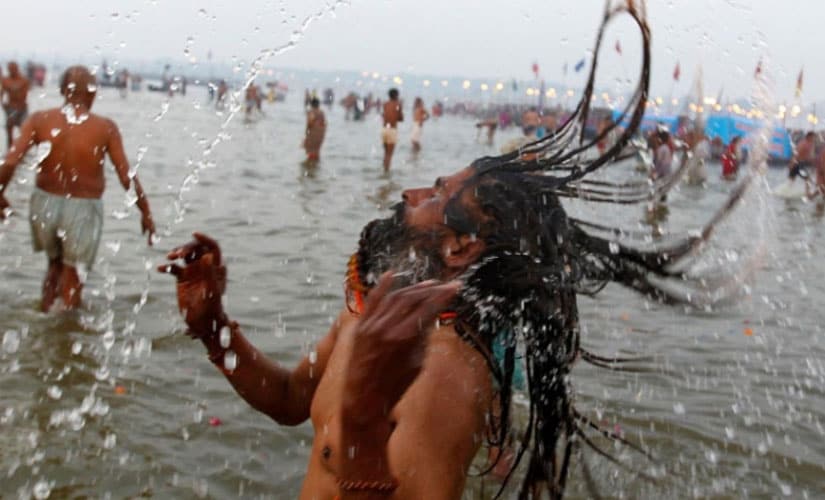 The recently concluded Mahakumbh held in Prayagraj, erstwhile Allahabad, was a major crowdpuller. Image courtesy News18[/caption] Total electors: 16,66,569 (2014 estimates) Female electors: 7,49,166 Male electors: 9,17,403 Reserved: No Delimited: No Assembly Constituencies: Meja, Karachhana, Allahabad South, Bara (SC), Koraon (SC) Results in last four Lok Sabha elections: In the 1999 elections, then human resource development minister, Murli Manohar Joshi, won the seat by defeating Rewati Raman Singh of the Samajwadi Party. Singh then won the seat back from Joshi in the 2004 elections. She was re-elected in the 2009 elections before losing to Shyama Charan Gupta of the BJP in the 2014 elections. The seat is known for electing many high-profile candidates like Lal Bahadur Shastri, VP Singh, HN Bahuguna and Janeshwar Mishra. Demographics: One of the economically significant districts in Uttar Pradesh, in 2014, Allahabad had a significant Patel and Dalit vote bank, each estimated to be over two lakh. The Bania community to which Gupta belongs is also a sizeable vote bank. Dalits, Thakurs and Brahmin voters, with their concentration in certain Assembly segments, also play a significant role in the electoral outcome in this constituency. 3. Fatehpur Lok Sabha Constituency Constituency number: 49 Total electors: 18,04,777 (2014 estimates) Female electors: 8,18,855 Male electors: 9,85,922 Reserved: No Delimited: No Assembly Constituencies: Jahanabad, Bindki, Fatehpur, Ayah Shah, Husainganj, Khaga Results in last four Lok Sabha elections: Ashok Kumar Patel won the 1999 Lok Sabha election as a BJP candidate. In the next election, Mahendra Prasad Nishad of the BSP won the seat. However, he lost the 2009 elections to Rakesh Sachan of the Samajwadi Party. BJP’s Sadhvi Niranjan Jyoti won the seat after defeating her nearest rival by over 1,70,000 votes. 4. Kaushambi Lok Sabha Constituency Constituency number: 50 Total electors: 17,38,994 Female electors: 7,83,670 Male electors: 9,55,324 Reserved: Yes. For Scheduled Castes Delimited: Yes. This constituency only came into being in 2008. Assembly Constituencies: Babaganj, Kunda, Sirathu, Manjhanpur, Chail Results in last four Lok Sabha elections: In 2009 elections, Shailendra Kumar of the Samajwadi Party won the seat. In the 2014 elections, Vinod Kumar Sonkar of the Bharatiya Janata Party won the seat. Demographics: The Pasi community is considered to have electoral influence in this constituency. Thakurs also are a sizeable portion of the electorate in the constituency. 5. Barabanki Lok Sabha Constituency Constituency number: 53 Total electors: 17,21,282 Female electors: 7,95,336 Male electors: 9,25,946 Reserved: Yes. For Scheduled Castes Delimited: No Assembly Constituencies: Haidergarh, Ram Nagar, Barabanki, Zaidpur, Kursi and Dariyabad Results in last four Lok Sabha elections: Ram Sagar Rawat of the Samajwadi Party won the seat in the 1999 elections. Kamala Prasad Rawat of the BSP won the seat in the 2004 elections. In the 2009 elections, Panna Lal Punia won the seat on a Congress ticket. But he lost to Priyanka Singh Rawat of the BJP in the 2014 Lok Sabha elections. Demographics: Barabanki, once notorious for opium cultivation and its role in the drug trafficking, has a high proportion of Dalit population. Most Dalits here belong to the Pasi and Chamar sub-castes. The constituency also has a significant Kurmi influence, with former Union Minister Beni Prasad Verma being the top-most leader from the community. 6. Mohanlalganj Lok Sabha Constituency Constituency number: 34 Total electors: 18,38,194 [caption id=“attachment_6280861” align=“alignnone” width=“825”] 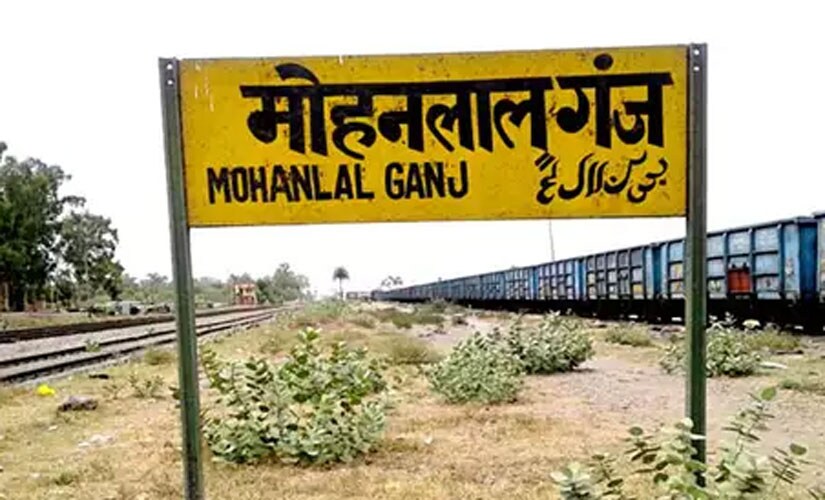 The Pasi community, the second largest Dalit caste after Jatavs, have considerable influence in the Mohanlalganj Lok Sabha constituency. Image courtesy News18[/caption] Female electors: 8,42,881 Male electors: 9,19,313 Reserved: Yes. For Scheduled Castes Delimited: No Assembly Constituencies: Sidhauli (SC), Malihabad (SC), Bakshi Kaa Talab, Sarojini Nagar, Mohanlalganj (SC) Results in last four Lok Sabha elections: In 1999 elections, Reena Choudhary of the Samajwadi Party won the election fighting on a Samajwadi Party ticket. Samajwadi Party continued to win the seat until 2014. In the 2014 election, Kaushal Kishore of the BJP defeated Sushila Saroj of the Samajwadi Party. Demographics: The Pasi community, the second largest Dalit caste after Jatavs, have considerable influence in the constituency. 7. Kheri Lok Sabha Constituency Constituency number: 28 Total electors: 16,79,466 Female electors: 7,74,603 Male electors: 9,04,863 Reserved: No Delimited: No Assembly Constituencies: Gola Gokrannath, Lakhimpur, Nighasan, Palia, Sri Nagar Results in last four Lok Sabha elections: Ravi Prakash Verma of the Samajwadi Party won the seat in 1999 and 2004 elections. Zafar Ali Naqvi of the Congress won the seat in 2009 while BJP’s Ajay Kumar Mishra won the seat in 2014 elections. Demographics: Kheri is known to be a bastion of Kurmi politics in Uttar Pradesh. Since Independence, 12 elections to the Lok Sabha have been won by Kurmis. Muslims are another factor in the electorate in this constituency, whose alliance with the Kurmis have decided the winner here. 8. Dhaurahra Lok Sabha Constituency Constituency number: 29 Total electors: 15,58,039 (2014 estimates) Female electors: 7,11,241 Male electors: 8,46,798 Reserved: No Delimited: Yes. It came into being after the 2008 delimitation Assembly Constituencies: Dhaurahra, Hargaon, Kasta, Maholi Mohammdi Results in last four Lok Sabha elections: In 2009, Congress leader Jitin Prasada won the seat after shifting from Shahajahanpur Lok Sabha constituency. In 2014, Rekha Verma of the BJP defeated Prasada to register a win on this seat. Demographics: Dhaurahra is majorly a rural constituency, part of Lakhimpur Kheri, the largest district in Uttar Pradesh. This constituency, which is close to the Nepal border, has an influential Kurmi electorate. Kurmis, considered part of the OBCs grouping, are the second biggest OBC group in Uttar Pradesh after Yadavs. 9. Sitapur Lok Sabha Constituency Constituency number: 30 Total electors: 15,50,263 Female electors: 7,12,282 Male electors: 8,37,981 Reserved: No Delimited: No Assembly Constituencies: Biswan, Laharpur, Mahmoodabad, Sevata, Sitapur Results in last four Lok Sabha elections: The Bahujan Samaj Party has won the seat thrice since the 1999 elections. BJP’s Rajesh Verma is the incumbent MP from the constituency. He won the seat twice before on a BSP ticket. In 2009, Kaisar Jahan won the seat on a BSP ticket. Demographics: Pasi, a sub-caste within the Dalit community, has a considerable presence in this constituency. Kurmis an OBC community, also have influenced elections in this constituency. Moreover, approximately 25 percent of the total electorate is Muslim. 10. Lucknow Lok Sabha Constituency Constituency number: 35 Total electors: 19,49,956 Female electors: 8,97,785 Male electors: 10,52,171 Reserved: No Delimited: Yes. Bakshi Ka Talao was transferred to Mohanlalganj (SC) Lok Sabha constituency, making Lucknow a significantly urban constituency. Assembly Constituencies: Lucknow West, Lucknow North, Lucknow East, Lucknow Central, Lucknow Cantt. Results in last four Lok Sabha elections: This is one of the most high-profile constituencies in India, having elected former prime minister Atal Bihari Vajpayee between 1991 and 2004. After Vajpayee retired from active politics, his prodigy Lalji Tandon represented the seat till 2014 before making way for current Home Minister Rajnath Singh. Demographics: A highly urbanised constituency, this BJP bastion is dominated by upper caste voters, especially Brahmins. Muslims, a large number of them belonging to the Shia sect, are found in large numbers in this constituency. 11. Kanpur Lok Sabha Constituency Constituency number: 43 Total electors: 16,11,248 [caption id=“attachment_6280941” align=“alignnone” width=“825”] 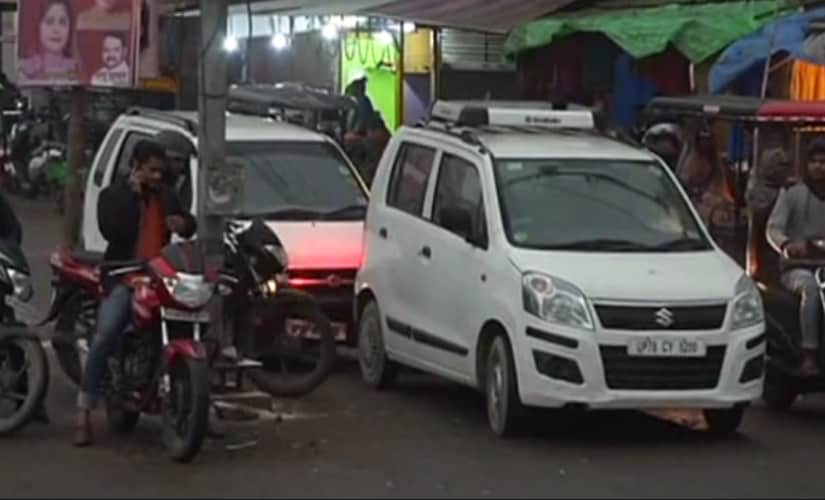 Kanpur is an urban constituency with Muslims, Scheduled Castes, often non-Jatavs, Yadavs and upper castes voters forming a bulk of the electorate. Image courtesy News18[/caption] Female electors: 7,21,903 Male electors: 8,89,345 Reserved: No Delimited: Yes. Kidwai Nagar Assembly constituency was added to the Lok Sabha constituency. Assembly Constituencies: Govind Nagar, Sisamau, Arya Nagar, Kidwai Nagar, Kanpur Cantt. Results in last four Lok Sabha elections: Former Union minister Sri Prakash Jaiswal won the seat thrice on a Congress ticket before losing to BJP stalwart Murli Manohar Joshi in 2014 elections. Demographics: The industrial hub of Uttar Pradesh, Kanpur is an urban constituency. Muslims, Scheduled Castes, often non-Jatavs, Yadavs and upper castes voters form a bulk of the electorate. 12. Pratapgarh Lok Sabha Constituency Constituency number: 39 Total electors: 17,16,625 (2014 estimates) Female electors: 7,92,957 Male electors: 9,23,668 Reserved: No Delimited: No Assembly Constituencies: Raniganj, Rampur Khas, Vishwanathganj, Patti, Pratapgarh Results in last four Lok Sabha elections: In the 1999 elections, Rajkumari Ratna Singh won the seat on a Congress ticket. Akshay Pratap Singh won the seat in the 2004 election, contesting as a Samajwadi Party candidate. In 2009, Ratna Singh won back the seat from the Samajwadi Party before losing to Kunwar Harivansh Singh of the BJP in 2014. Demographics: Pratapgarh is known for having a sizeable Muslim vote bank. Equally strong are the Brahmins and Thakurs of the constituency. Kurmis, an OBC community, in eastern Uttar Pradesh is also quite influential here. Apna Dal, which won the seat in the 2014 polls, is a political party influential among the Kurmi community. 13. Rae Bareli Lok Sabha Constituency Constituency number: 36 Total electors: 15,94,954 (2014 estimates) Female electors: 7,37,079 Male electors: 857,875 Reserved: No Delimited: Maharajganj (reserved) renamed Bachhrawan Assembly Constituencies: Bachhrawan, Harchandpur, Rae Bareli, Sareni, Unchahar Results in last four Lok Sabha elections: A Congress bastion, Indira Gandhi held the seat between 1967 and 1977. In 1999 elections, Congress stalwart Satish Sharma won the seat. Former Congress president Sonia Gandhi is the incumbent MP from Rae Bareli, having won three times consecutively. Demographics: Brahmins are at least 10 percent of the population, while Muslims are 15 percent of the electorate. Pasi, a sub-caste of Dalits, and Kshatriyas also have a notable presence in this constituency. 14. Akbarpur Lok Sabha Constituency Constituency number: 44 Total electors: 17,68,623 (2014 estimates) Female electors: 7,61,961 Male electors: 9,77,662 Reserved: No Delimited: Yes. Akbarpur Lok Sabha constituency came into existence in 2008 after Bilhaur and Ghatampur Lok Sabha constituencies ceased to exist. Assembly Constituencies: Akbarpur-Raniya, Bithoor, Kalyanpur, Maharajpur, Ghatampur (SC) Results in last four Lok Sabha elections: Raja Ram Pal of Congress won the seat in 2009 while Devendra Singh Bhole of BJP won the seat in the 2014 “Modi wave” in Uttar Pradesh. Demographics: Spread across Kanpur Nagar and Kanpur Dehat district, Akbarpur Lok Sabha constituency is a crucial vote bank with at least 15 percent OBC voters. Dalit communities, which constitute nearly 20 percent of the population in the two districts, also play a big role in determining the winner in this constituency. The Thakur community, to which the incumbent MP belongs, has also a sizeable number of voters. 15. Unnao Lok Sabha Constituency Constituency number: 33 [caption id=“attachment_6281091” align=“alignnone” width=“825”] 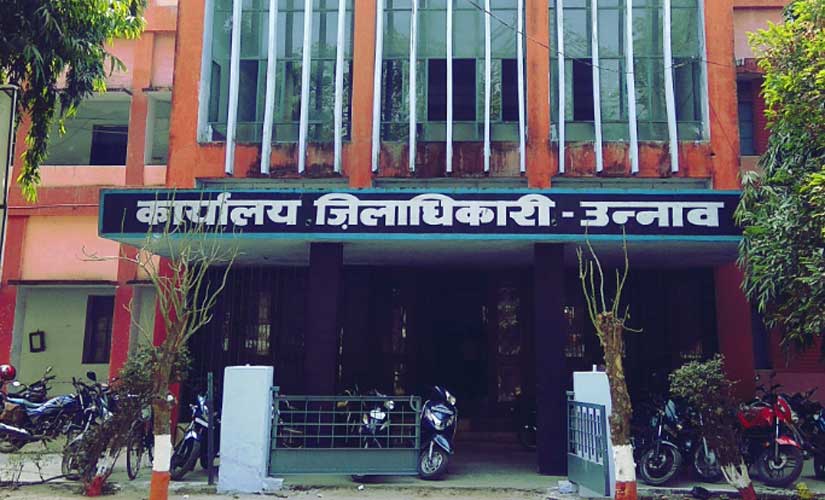 After delimitation, Unnao held the record for the biggest constituency in India until 2014 elections. Image courtesy Government of Uttar Pradesh[/caption] Total electors: 21,64,392 (2014 estimates) Female electors: 9,69,996 Male electors: 11,94,396 Reserved: No Delimited: Yes. After 2008 delimitation, parts of Hadha Assembly constituency were merged with neighbouring constituencies. After delimitation, Unnao held the record for the biggest constituency in India until 2014 elections. Assembly Constituencies: Bangarmau, Safipur (SC), Mohan (SC), Unnao, Bhagwantnagar, Purwa Results in last four Lok Sabha elections: In the 1999 elections, Deepak Kumar of the Samajwadi Party won the Unnao seat. In the next elections, Brajesh Pathak was elected on a BSP ticket. In the 2009 polls, Annu Tandon of the Congress won the seat. In the 2014 elections, controversial MP Sakshi Maharaj won the seat by over 3 lakh votes. Demographics: The Lok Sabha constituency covers the entire district of Unnao. One of the 250 most backward districts in India, it has long been dismissed as “ Lucknow’s poor cousin”. However, since 2009 Unnao has been a high-profile constituency, dominated by the Brahmins. Pasi, a Dalit community, as well as Lodh, an OBC sub-caste, are also dominant in the electorate. It is also a rural constituency. 16. Misrikh Lok Sabha Constituency Constituency number: 32 Total electors: 17,25,585 (2014 estimates) Female electors: 7,77,295 Male electors: 9,48,290 Reserved: Yes. For Scheduled Castes Delimited: Yes. Bilhour, once part of eponymous Lok Sabha constituency, became part of Misrikh Lok Sabha constituency in 2008. Assembly Constituencies: Misrikh (SC), Mallanwan, Balamau(SC), Sandila, Bilhaur(SC) Results in last four Lok Sabha elections: In 1999 elections, Sushila Saroj of the Samajwadi Party won the seat. In 2004 and 2009 elections, Ashok Kumar Rawat of the BSP won the seat, while he lost to Anju Bala of the BJP in the 2014 elections. Demographics: A holy land known for its association with Maharishi Dudeech, Misrikh Lok Sabha constituency is dominated by voters belonging to the Dalit community, who constitute at least one-third of the population. The constituency is largely rural, with just one-tenth of the population living in urban areas. 17. Hardoi Lok Sabha Constituency Constituency number: 31 Total electors: 17,14,387 (2014 estimate) Female electors: 7,74,556 Male electors: 9,39,831 Reserved: Yes. For Scheduled Caste Delimited: No Assembly Constituencies: Sawaijpur, Shahabad, Hardoi, Gopamau, Sandi Results in last four Lok Sabha elections: In 1999 elections, Jai Prakash of the Akhil Bharatiya Loktantrik Congress won the seat. In the 2004 elections, Ilyas Azmi of the BSP got elected to represent the constituency, while Samajwadi Party’s Usha Verma tasted success in 2009 elections. In 2014 elections, Anshul Verma defeated his predecessor by a margin of 81,000 votes. Demographics: At least 85 percent of the electorate in Hardoi live in rural areas. Around 30 percent of the population belong to the Scheduled Castes. Kurmis and Brahmins hold influence in this constituency, while other OBCs may also be crucial in determining victory or defeat of candidates. It is noted that Samajwadi Party turncoat Naresh Agarwal is a well-known face of Hardoi constituency. 18. Kannauj Lok Sabha Constituency Constituency number: 42 Total electors: 18,08,889 (2014 estimates) Female electors: 8,08,882 Male electors: 10,00,007 Reserved: No Delimited: No Assembly Constituencies: Chhibramau, Tirwa, Kannau(SC), Bidhuna, Rasulabad(SC) Results in last four Lok Sabha elections: This is a Samajwadi Party stronghold, with the Yadav family winning from this seat since 1999 elections. After Mulayam Singh Yadav vacated the seat, his son Akhilesh Yadav won the seat in 2000, going on to hold it till 2012. After he became the Chief Minister of Uttar Pradesh, his wife Dimple Yadav has held the seat in the Lok Sabha. Demographics: The constituency is dominated by the Yadavs and Muslims, who together are considered the vote banks of the Samajwadi Party. The constituency also has a considerable Rajput presence, accounting for 10 percent of the population. Meanwhile, Brahmins account for 15 percent of the population.
Except for Rae Bareli, which was won by former Congress president Sonia Gandhi, and Kannauj, which was won by Dimple Yadav of the Samajwadi Party, rest were won by the BJP.
Advertisement
End of Article


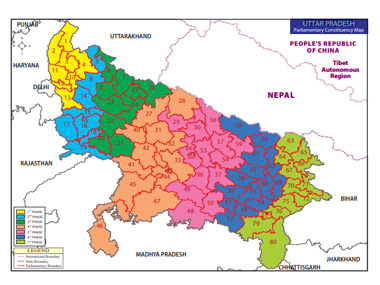)
)
)
)
)
)
)
)
)



